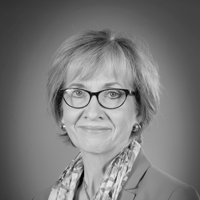Question
How have the diagnostic criteria changed for autism spectrum disorders?
Answer
For many years, the diagnostic and statistical manual of the American Psychiatric Association specified a set of diagnostic criteria that are globally used to diagnose austism spectrum disorders. In 2013 they had a major revision of these criteria. As of 2017, there are many individuals with autism spectrum disorder or Asperger's disorder or PDD-NOS who still have those diagnoses and based on the 2013 standards or diagnostic criteria, they keep those diagnoses until they are re-evaluated. There are many different diagnostic terms today and it's important to be aware of the criteria under which individuals were diagnosed and re-diagnosed if they are reassessed in the future.
In 2000, the DSM-4 specified that there were five pervasive developmental disorders. One of those was autistic disorder, or autism, as we more commonly refer to it. It was one of five disorders which were entitled pervasive developmental disorders because they were pervasive into almost every aspect of the individual's life. Autistic disorder was diagnosed by a series of social, behavioral, and communication symptoms.
Asperger's disorder, on the other hand, was differentiated from autism in that the individuals with this condition were very fluent with their language. They most-likely presented some early language delays, but once they learned language they spoke in sentences conversationally in a very fluent way. This very much differentiated it from autistic disorder in which individuals had life-long difficulty putting communication together, even if they achieve conversational language. Oftentimes it was still very difficult for them to put their thoughts into words and to think in words.
There were three other pervasive developmental disorders in this category. One was pervasive developmental disorder, not otherwise specified, or PDD-NOS. This became the most popular category of pervasive developmental disorder. It was intended to be for individuals who exhibited some characteristics of autism, yet not enough characteristics to give the full diagnosis of autistic disorder. The original authors of the DSM-4 intended this to be a placeholder condition when diagnosticians, maybe very early in development, were not sure whether the child was going to present the full autistic disorder or maybe just have a few characteristics that they may develop out of over time. It was really meant to be a placeholder in which a new diagnosis, or a new evaluation, was conducted in a year or so to determine whether or not autistic disorder or Asperger's disorder or some other condition was present. However, in practice, PDD-NOS was a diagnosis that frequently stuck and followed the child for quite a long time. The other two other conditions in this category were Rett's Disorder and childhood disintegrative disorder. These were both neurodegenerative conditions that are genetic or neurological in origin and are much rarer than the other three conditions, as it turns out.
The DSM-4 specified that a diagnosis of autism or Asperger's syndrome or PDD-NOS needed to be rendered by the time the child was three years of age and the presenting symptoms should be there for the diagnosis to be rendered by that time. In 2013, the American Psychiatric Association, after a long period of study and consultation with many autism experts, set forward a new group of diagnostic standards. They did away with the category of pervasive developmental disorders and renamed a category of autism spectrum disorders all for itself. In a sense this gave the diagnosis of autism a greater standing in the psychiatric community. They completely revamped how autism was diagnosed and while you will still see the communication, social, and behavioral components in the diagnosis, they became a little more specific in terms of exactly what behaviors we wanted to look for. This is a good change and one that has helped us to know what we're looking for better than we did before.
Specifically, for a diagnosis of autism spectrum disorders there will be social, communication, and interaction deficits, restricted behaviors, activities and interests similar to before. Now, instead of diagnosing autistic disorder, Asperger's disorder, PDD-NOS, autism is diagnosed based on a level of severity. Level 1 individuals with autism are those that require the least support. They have more communication. They are much more verbal. They are going to communicate in sentences or conversationally. Level 2 individuals need some support from others. Level 3 are individuals with autism who have minimal verbal ability, certainly limited understanding of language, limited social skills, and behavioral aspects that would be expected and they are going to require very substantial support to be independent. No longer does the diagnosis have to be rendered by age three, but rather just very early in development.
Please refer to the SpeechPathology.com course, Key Features of Autism Spectrum Disorder That Distinguish it From Other Disorders, for more in-depth information on identifying the differential diagnostic indicators to help clinicians know when a child presents with autism.

